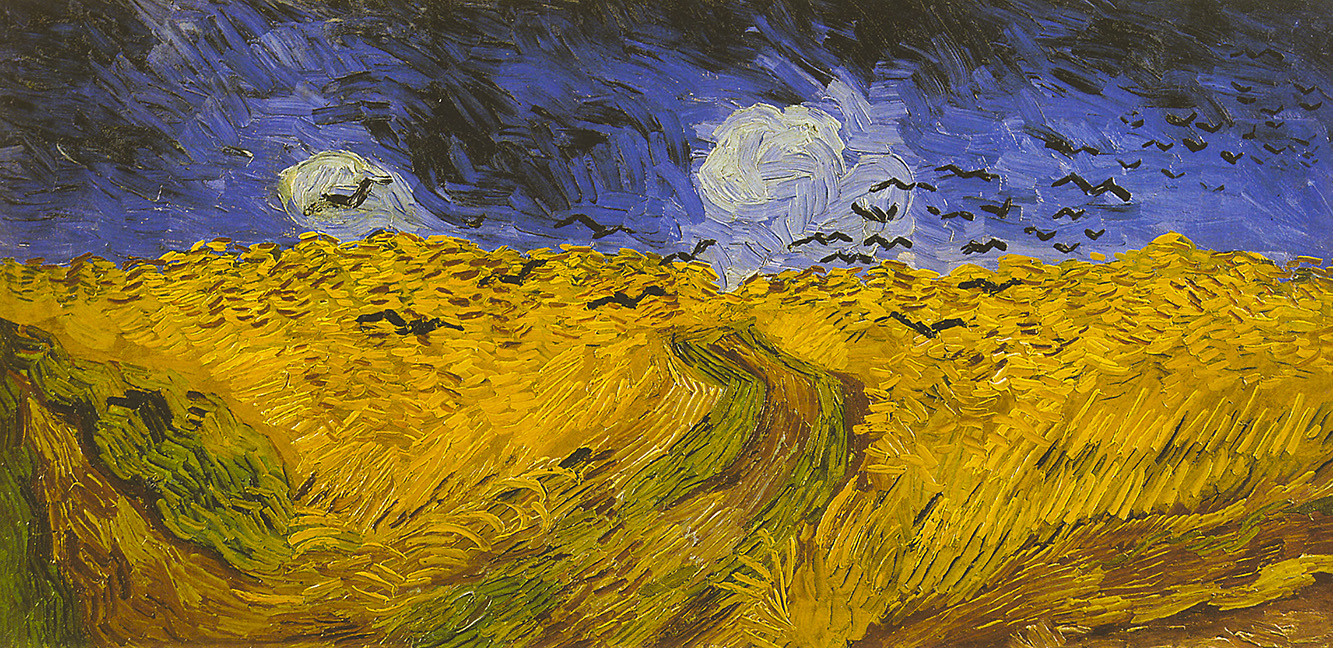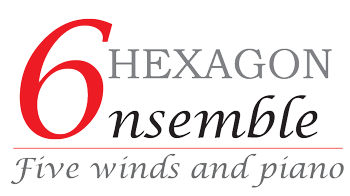
An Encounter with Vincent van Gogh
This is a new version of the successful Hexagon program ‘The Imagination’.
Starting point of this program is the commemoration of the 125th anniversary of the death of Vincent van Gogh. Local (amateur)painters create their own ‘Van Gogh’. The Hexagon Ensemble plays music that suits the different style period of this grand old Dutch master. During the concert, which includes a projection of the new ‘Van Gogh’s’ everything falls into place.
Local (amateur)painters are asked to make paintings inspired by the work of Vincent van Gogh as well as the carefully selected accompanying music.
Gustav Holst (1874-1934)
Quintet opus 14 in A flat major (1903)
flute-oboe-clarinet-bassoon-French horn
Francis Poulenc (1899-1963)
Trio opus 43 (1926)
oboe-bassoon-piano
Joseph Jongen (1873-1953)
Rhapsody (1922)
flute-oboe-clarinet-bassoon-French horn-piano
Intermission (hereafter with projection of the paintings)
Dmitri Sjostakovitsj (1906-1975)
Elegie from ‘The lady Macbeth from the Mtsensk district’ (1932)
flute-oboe-clarinet-bassoon-French horn-piano
Claude Debussy (1862-1918)
From ‘Six Épigraphes Antiques’: Pour un tombeau sans nom (1914)
flute-French horn-piano
Erik Satie (1866-1925)
Gymnopédie no. 1 (1888)
piano
Albert Roussel (1869-1937)
Divertissement (1906)
flute-oboe-clarinet-bassoon-French horn-piano
André Caplet (1879-1925)
From ‘Quintette’: Scherzo (1898)
flute-oboe-clarinet-bassoon-piano
Henry Purcell (1659-1695)
From ‘Dido and Aeneas’: When I am laid in earth (1680) Arr. Christiaan Boers
bassoon-French horn-piano
Francis Poulenc (1899-1963)
From ‘Sextuor’: Finale (1932-1939)
flute-oboe-clarinet-bassoon-French horn-piano
An encounter with Vincent van Gogh
This is a new version of the successful Hexagon program ‘The Imagination’.
Starting point of this program is the commemoration of the 125th anniversary of the death of Vincent van Gogh. Local (amateur)painters create their own ‘Van Gogh’. The Hexagon Ensemble plays music that suits the different style period of this grand old Dutch master.
During the concert, which includes a projection of the new ‘Van Gogh’s’ everything falls into place.
Local (amateur)painters are asked to make paintings inspired by the work of Vincent van Gogh as well as the carefully selected accompanying music. In order to do this, listen to the online promo- and instruction videos. In these video’s, paintings from different style periods of Van Gogh can be seen, while the music plays (those pieces that will be played by the Ensemble after the intermission of the concert). In this music the development of Van Gogh is clearly audible: from dark and moody to light and colourful.
The music played before the intermission is – when it comes to the musical development – more or less a mirror of the part after the break.
The program before the intermission develops from a late-Romantic Quintet by Gustav Holst, via a melancholic and equally brilliant Trio by Francis Poulenc, to a colourful and impressiontically-tinted Rhapsody composed by Joseph Jongen.
 A selection of works by the painters is projected during the concert on a large screen, but also physically present as part of an exposition. Especially for this program, a Powerpoint presentation is created, made up of the works of the amateur painters.
A selection of works by the painters is projected during the concert on a large screen, but also physically present as part of an exposition. Especially for this program, a Powerpoint presentation is created, made up of the works of the amateur painters.
The audience thus sees the works flow from one into the other on a large screen above the players of the Hexagon Ensemble: a golden combination of the visual and the musical. Through this interactive cooperation with amateurs – who are supported in their effectors by instructors in schools or other institutions – the Hexagon Ensemble aims to bring classical music and visual art closer together.
During the projection both ‘new Van Gogh’s’ as well as original works by Van Gogh are included.
It is evident that through this cooperation with local painters a new potential audience can be reached. The participating artists will definitely bring family and friends along to the performance, in order to see both their own work and those of their colleagues at the exposition that takes place before, as well as during the actual projection of the paintings during the performance.


